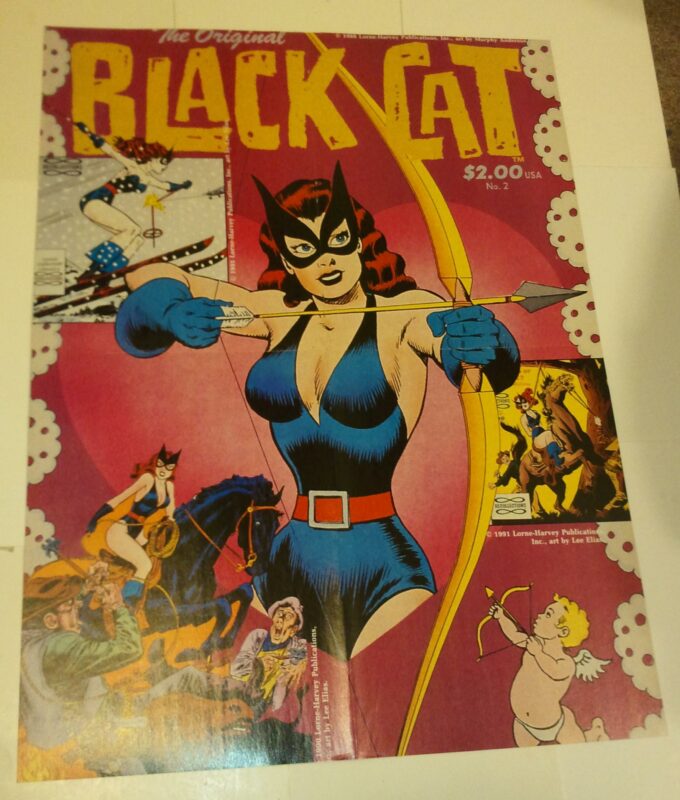Description
The Black Cat is a comic book adventure heroine published by Harvey Comics from 1941 to 1951. Harvey also published reprints of the character in both the mid-1950s and the early 1960s. The character’s creation is claimed by the Harvey family to have originated with publisher Alfred Harvey, but there is no corroborating evidence for this. The Black Cat debuted in Pocket Comics #1 (Aug. 1941), an experimental digest-sized comic book published by Harvey.,1 and was illustrated by artist Al Gabrielle. The character was ranked 41st in Comics Buyer’s Guide’s “100 Sexiest Women in Comics” list. After the demise of Pocket Comics, the Black Cat became one of the features in the anthology Speed Comics, lasting until that title’s demise in 1947. By 1946, Black Cat had also gained her own title, which published her adventures until 1951 before changing its content to horror stories (the title was subsequently known as Black Cat Western Comics, Black Cat Mystery Comics, Black Cat Western Mystery, Black Cat Western Comics, and Black Cat Mystic, before reverting to Black Cat for the final three issues, #63-65). Black Cat also appeared in a separate Harvey anthology, All-New Comics, in issues 6, 9, and 15. Writers on the Black Cat series are not positively known. Artists who worked on the feature after Al Gabriele include Pierce Rice, Arturo Caseneuve, Bob Powell, Jill Elgin and Joe Kubert. Lee Elias, occasionally inked by John Belfi, provided the art from 1946 until the feature’s end in 1951. Linda Turner is the daughter of silent film Western actor Tim Turner and a former Hollywood stunt woman. Linda has successfully made the transition from stunt woman to lead actress. During the filming of an unnamed picture, Linda suspects the film’s director, Garboil (no first name given), of being a Nazi spy or at the very least an American Bund member. In order to follow him and gain corroborating evidence, she disguises herself in a backless blue blouse, red shorts, blue flared gloves, red buccaneer boots and a blue opera mask and calls herself The Black Cat. It was rumored in 1992 that Sean Young, after her aggressive campaign to play Catwoman in the “Batman” sequel failed, would get her sweet revenge by playing The Black Cat in a big-screen version of the Harvey Comics superheroine. In 2005 it was reported in Variety that the script was being finished up for another proposed movie adaptation of The Black Cat, this one produced by Michael Uslan and directed by “Scorpion King” and “The Mask” director Chuck Russell. Lee Elias (May 21, 1920 – April 8, 1998) was a British-American comics artist. He was best known for his work on the Black Cat comic book published by Harvey Comics in the 1940s. It was Elias’s work on Black Cat, a stuntwoman turned crimefighter, for Harvey, that stood out in this period. The series was praised by comics historian Trina Robbins for its “logical” and “straightforward” approach,2 in contrast to more fantasy-oriented titles like Wonder Woman. Elias worked both as a penciler and an inker in this series, with an art style largely influenced by artists like Milton Caniff and Noel Sickles. (Elias worked for a period as Caniff’s assistant.)3 He used the same style for the comic book version of Terry and the Pirates, Caniff’s classic comic strip in the same period. Lee Elias left comic books after the 1954 publication of Fredric Wertham’s anti-comics book Seduction of the Innocent, which used four of his Black Cat panels as examples of “depraved” comic art.
Near mint condition.
Related products
-

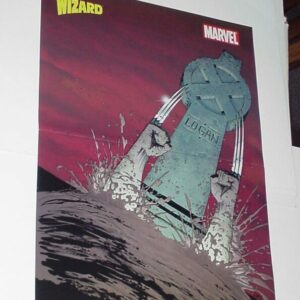
Wolverine Poster #13 Lives! by John Cassaday X-Men
$34.99 Add to cart -
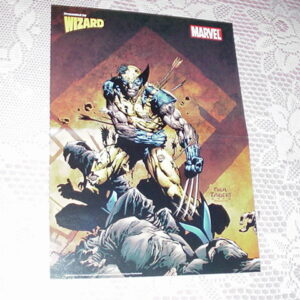
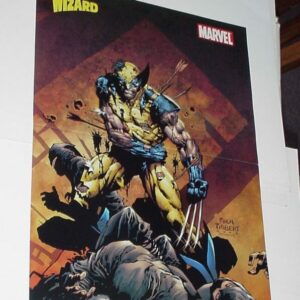
Wolverine Poster #16 vs The Hand The End by David Finch Ninjas
$39.99 Add to cart -


Captain America Poster # 9 In Chains by John Cassaday Issue 8
$29.99 Add to cart -
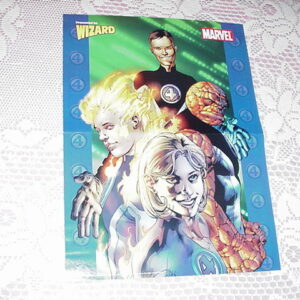

Ultimate Fantastic Four Poster # 1 Bryan Hitch Reed Johnny Sue Ben
$39.99 Add to cart


